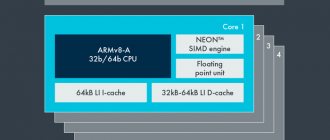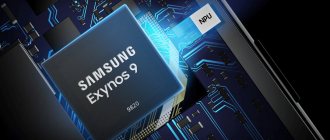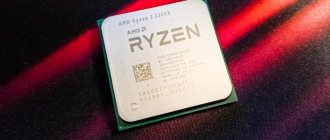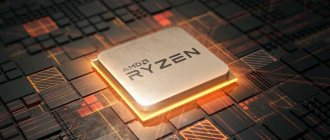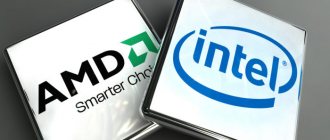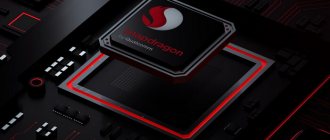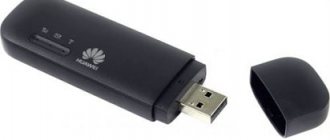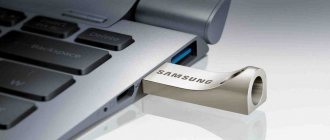Huawei Kirin 960 - a new processor for VR
The Chinese manufacturer Huawei differs from other companies from the Middle Kingdom in that it not only produces smart gadgets, but equips them with processors of its own design. So the other day, the Huawei brand introduced the new flagship chipset HiSilicon Kirin 960, which replaced the Kirin 955. In addition, the manufacturer immediately presented a brand new smartphone Huawei Mate 9 , the heart of which was the announced chip. The news about the new Kirin 960 would not be so relevant if not for the following facts: the chip was the first in the world to receive new high-performance Cortex-A73 cores, a Mali G71 MP8 graphics accelerator and advanced UFS 2.1 memory. We previously wrote that Mali has developed Cortex-A73 cores and Mali G71 graphics, which will take virtual reality to a new level. It was also expected that the first smartphones with this configuration will appear no earlier than 2020, but Huawei decided to accelerate the development of technology and delight users with excellent new products in early November 2020.
Advantages of Qualcomm Snapdragon
At the time of the release of the competitor from Huawei, the best solution from Qualcomm was the Snapdragon 855. The processor did not support 5G networks, was inferior in the work of neural networks and could not get ahead of the Kirin 990 in CPU and GPU testing. However, there is a logical explanation for this - Snapdragon 855 came out earlier than its opponent.
To compete with more powerful chips supporting 5G networks, Qualcomm introduced its second SoC of the year called Snapdragon 855 Plus. The new product received an updated communication module and Kryo cores, built on the same top-end Cortex A76, but with an increased frequency. GPU performance has increased by 15%. Since Kirin only receives updates once a year, Qualcomm was able to catch up with HiSilicon by releasing an updated version of its chip.
Even in the case of the Snapdragon 855 Plus, the Kirin 990 was slightly better in the single-core CPU test. The same cannot be said about the multi-threaded operating mode, where even the 855 chip from Qualcomm is practically not inferior to the Kirin 990.
Thus, both Qualcomm and Kirin are developing excellent chips for mobile devices. Test results show that chips produced for Huawei&Honor provide serious competition to Qualcomm-based smartphones. In addition, the lower production cost of Kirin chips is also reflected in the cost of the final smartphones.
Kirin 960 performance
So, the processor is based on eight cores, four of which are energy-saving Cortex-A53 with a frequency of up to 1.8 GHz, and the remaining four powerful Cortex-A73 cores operate at a frequency of up to 2.4 GHz. The chip is made using the 16-nanometer FinFET Plus process technology, and the overall processor performance has increased by 10% compared to the Kirin 955. As for RAM, the Kirin 960 supports the LPDDR4 standard, and permanent memory can now be in UFS 2.1 format (reading/writing faster at 150% than UFS 2.0).
As for the graphics accelerator, the new Mali G71 MP8 is literally a breakthrough for the British development company ARMi, since its previous line of Mali-T880 MP12 was 40% weaker than the Adreno 530 graphics used in Snapdragon 820/821 . According to the data, the Mali G71 MP8 is 180% more productive than the T880 MP12, and the Kirin 960 chipset itself was the first of all Huawei processors to receive 100% support for the Vulkan API. Thanks to the Vulkan API, which provides game and application developers with direct access to CPU and GPU resources, game graphics will significantly improve and the number of FPS will increase. This same increase can range from 40 to 400% depending on the game and the smartphone.
As stated by ARM, Cortex-A73 cores and G71 graphics will improve the performance of virtual reality devices. So, the Kirin 960 can provide a resolution of 2560x1440 pixels at 90fps in VR mode, and the image latency will not exceed 18 ms.
The Geekbench 4.0.0 test shows that in single-core mode, the Hisilicon 960 outperforms competitors from Qualcomm and Samsung, reaching the 2000 point mark, but is far behind the Apple A10 Fusion, which can score as much as 3500 points. But in the multi-core test, the Kirin 960 is unrivaled and outperforms both the Snapdragon 821 and the Apple A10, which is due to the large number of cores simultaneously included in the test. The indicator exceeds 6300 points, while competitors are below the 6000 level.
Advantages of HiSilicon Kirin
The chips produced for Huawei were not outstanding until 2018. Even flagship devices had problems with the memory subsystem, high power consumption and weak graphics accelerator. But already at the end of last year, the Kirin 980 was released, which received many significant changes. Among them, it is worth highlighting the Dynamic Core architecture, which allows the use of several types of cores. So, for surfing the Internet, weak and energy-efficient cores are used, and for demanding games, the remaining, productive cores with increased frequency and voltage were connected. This helped get rid of the high power consumption during daily use.
Huawei Kirin 960 power consumption
Since power consumption for mobile devices is on par with performance, Huawei engineers had to work hard to ensure that the Kirin 960 was not only powerful, but also economical. The Cortex-A73 cores themselves consume 15% less energy than their Cortex-A72 predecessors, but the graphics accelerator has now become 20% more energy efficient. An important innovation in the Kirin 960 processor is the additional i6 coprocessor, which ensures the operation of very light tasks, while the main cores of the chip are idle.
The main advantages of the i6 coprocessor are that it is responsible for the operation of the device’s sensors: gyroscope, barometer, low-power GPS, accelerometer, etc. This allows a smartphone, tablet or any other device to consume half as much energy, which has a positive effect on the life of the device, while heating the chipset is practically absent. This technology has long been used in Apple processors, but for Huawei chips it is new.
Snapdragon 845, Kirin 970 and Exynos 9810 - who is better? Comparison of flagship processors 2020
Snapdragon 625 vs Snapdragon 630 - which is better for an inexpensive smartphone in 2020?
These chips will be installed exclusively in flagship devices of 2020, which will allow them to score record scores in synthetics and run any existing games at maximum speed. In addition, top processors will include neuromorphic units, advanced technologies to improve the quality of photos and videos, fast modems for LTE networks and much more. Let's take a look at the main list of characteristics of the reviewed mobile platforms.
Snapdragon 845, Exynos 9810 and Kirin 970 - characteristics
Each presented chip has up to eight computing cores, as well as a separate neuromorphic unit necessary for computer vision, machine learning, etc. And although there are 8 cores everywhere, the cores themselves differ both in clock frequency and modification. For example, the Kirin 970 doesn’t bother much and uses stock cores from ARM Cortex-A73 (high-performance) and ARM Cortex-A53 (energy-efficient), but at Samsung and Qualcomm the engineers went a little further. They customized the stock cores, improving performance and energy efficiency, thereby creating their own solutions. So, the Snapdragon 845 has 4 Kryo 385 Gold cores (Cortex-A75 converted) and 4 Kryo 385 Silver cores (Cortex-A55 converted), while the Exynos 9810 uses 4 Exynos M3 cores (powerful) and 4 Cortex-A cores. A55. Even without taking into account frequencies, it becomes clear that custom cores give an advantage to the Exynos 9810 and Snapdragon 845, while the Kirin 970 is the slowest, especially since competitors use newer solutions A75 and A55 instead of A73 and A53. The technological process of all three representatives has a thickness of 10 nanometers, so they should all be relatively cold and carefully consume battery charge under moderate loads. But if you choose a leader in benchmarks, then the fastest CPU is offered by Exynos due to higher frequencies, with Snapdragon showing a slight lag. Kirin is very far behind its competitors.
Although the processor units in the presented chips differ, they still work very quickly and in practice it will be difficult to notice the difference, which cannot be said about graphics accelerators. For a long time now, the leader in graphics has been Qualcomm, while opponents are always content with the title of catching up. Recently, video accelerators from Mali have come very close to Adreno, but this applies to last year’s Mali-G72 and Adreno 540 (a 30% difference in favor of Adreno). This year the battle will take place between the Mali-G72 and the Adreno 630 - while the data and performance of the latter are not yet available, according to rumors it will surpass its competitor by at least 50%. That is, we are again faced with the market leader Snapdragon 845, which even has an excessively powerful graphics unit that is head and shoulders above its competitors. The Exynos 9810 should also handle graphics without problems (includes 18 clusters), and the Kirin 970 will be in third place with 12 clusters.
In terms of camera capabilities, the Kirin 970 is in first place. Naturally, few people would think of installing a single 42 MP camera, but technically this resolution is supported. In second place is Snapdragon 845 with 32 MP, and in third place is Exynos 9810 with 24 MP. At the same time, all three processors can process data from two sensors up to 16 MP and in this regard they have parity. For video recording, the best solution is Exinos 9810, which can shoot video in 4K at speeds up to 120 fps - very powerful, so far the record holder in this matter. Snapdragon 845 is also not bad, but 4K writes up to 60 fps, and Kirin 970 even up to 30 fps.
As for the other parameters of Snapdragon 845, Kirin 970 and Exinos 9810, see them in the table.
Exynos 9810 | Snapdragon 845 | Kirin 970 | |
| CPU | 8 cores Exynos M3 4 x 2.9 GHz + 4 x 1.9 GHz 10nm FinFET 2nd gen. LPP, 64 bit | 4 x Kryo 385 Gold (Cortex-A75) + 4 x Kryo 385 Silver (Cortex-A55) 4 x 2.8 GHz + 4 x 1.8 GHz 10nm FinFET 2nd gen. LPP, 64 bit | 4 x Cortex-A73 + 4 x Cortex-A534 x 2.36 GHz + 4 x 1.8 GHz TSMC 10nm FinFET+, 64 bit |
| Video accelerator | ARM Mali G72 MP18 | Adreno 630 | ARM Mali G72 MP12 |
| Photo capabilities | 1 x 24 MP or 16 + 16 MP | 1 x 32 MP or 16 + 16 MP | 1 x 42 MP or 16 + 16 MP |
| Video recording | Recording – up to 4K UHD at 120 fps Playback – up to 4K UHD at 120 fps | Recording – up to 4K UHD at 60 fps Playback – up to 4K UHD at 60 fps | Recording – up to 4K UHD at 30 fps Playback – up to 4K UHD at 60 fps |
| Display options | Up to 4K UHD (4096 x 2160) WQUXGA (3840 x 2400) at 60 fps | 4K UHD (4096 x 2160) 60FPS | 4K UHD (4096 x 2160) |
| Communications and communications | Dual Band Wi-Fi b/g/n/ac + MU-MIMO.Bluetooth 5.0, NFC Reception LTE Cat.18 6CA 1.2 Gbit/s Output LTE Cat.18 2CA 200 Mbit/s | Dual Band Wi-Fi 2×2 802.11ad Multi-Gigabit2.4 GHz, 5 GHz 60 GHz + MU-MIMOBluetooth 5.0, NFCSnapdragon X20 LTE: LTE Cat.18 reception 1.2 Gbit/s LTE Cat.13 output 150 Mbit/s | Dual Band Wi-Fi 802.11 a/b/g/n/ac + 4×4 MIMOBluetooth 4.2, NFC LTE Cat. 18 to 1.2 Gbit/s LTE Cat.13 output 150 Mbit/s |
| Audio | N/A chip 32bit/384kHz | Qualcomm® Aqstic™ Qualcomm® aptX™384kHz/32bit | N/A chip 32bit/384kHz |
| Navigation | GPS, GLONASS, BeiDou | GPS, GLONASS, Beidou, Galileo, QZSS, SBAS | GPS, A-GPS, GLONASS, BeiDou |
| Fast charging | Samsung Adaptive Fast Charge, Fast Wireless Charging (Qi & PMA) | Qualcomm Quick Charge 4/4+ | Huawei Super Charge 3.0 |
Huawei Kirin 960 dual cameras and sound
Huawei, unlike its competitors, has a large number of smartphones with two main cameras, so this point was taken into account when developing the Kirin 960 chip. The company's engineers have introduced a number of technologies into the stone that improve the quality of images from two cameras. The processor copes well with color and monochrome matrices, while supporting 4K video recording and electronic image stabilization. Now, not only the iPhone 7 Plus can boast of the real-time background blur function, since this function is also available in devices with the Kirin 960 chip - in the same Huawei Mate 9. In general, the new processor is packed with many improvements that allow you to get photographs close to those obtained with amateur SLR cameras.
In 2020, many manufacturers have relied on sound - some have removed the 3.5 mm headphone jack, since it cannot provide adequate sound quality, while others are equipping smartphones with separate audio chips. Huawei took the second path and introduced the Hi6403 audio chip into the Kirin 960, which is responsible for noise reduction when working with a microphone (during a conversation) and provides excellent sound in headphones. The Hi6403 chip supports playback of High-end 32-bit/192 kHz and DSD audio formats at the hardware level. In terms of battery consumption, the Hi6403 requires 30% less power than its predecessor.
Specifications
Both chips are built on 8 Cortex-A53 cores. The cores do not have incredible computing power, but they are quite energy efficient. This property ensured that the chips were highly marketable in the budget and mid-market segments. In addition to Huawei and Qualcomm chips, such cores can be seen in MediaTek Helio P20/P23/P30. The modern Helio P60 processor also has them. Cortex cores are widely used by Samsung in Exynos chips.
The Kirin and Snapdragon chipsets are no different in architecture, but there are differences in the clock frequency and manufacturing process. In Kirin, the cores are divided into two blocks. For more complex operations, a 4-core cluster operating at 2.36 GHz is used. Light tasks are distributed among 4 cores operating at a reduced pulse frequency of 1.7 GHz. This helps reduce energy costs and increases the autonomy of the phone.
| Kirin 659 | Snapdragon 625 | |
| Technical process | 16 nm | 14 nm |
| Number of Cores | 8 | 8 |
| Processor architecture | 8x Cortex A53 | 8x Cortex A53 |
| Clock frequency | 4x 2.36 GHz + 4x 1.7 GHz | 8x 2.0 GHz |
| Graphics accelerator | Mali-T830 MP2, 900 MHz | Adreno 506 GPU, 650 MHz |
| RAM | LPDDR3 933 MHz | LPDDR3 933 MHz |
| LTE Modem | Cat.6 300/50 Mbit/s | Cat.13/Cat.7 300/150 Mbit/s |
The Snapdragon 625 chip does not have such a division. The cores are capable of operating at a maximum frequency of 2.0 GHz. When performing standard operations, the chipset resets frequencies, which makes it possible to reduce energy costs. Snapdragon's more complex manufacturing process also contributes to significant energy savings. The chipset is created according to the standards of 14 nm technical process, and Kirin 659 is produced at 16 nm. Such a small difference has little effect on power consumption, but when comparing chipsets, it turns out that the Snapdragon 625 spends its charge with noticeably greater efficiency.
Both chips support LPDDR3 memory. It operates at a frequency of 933 MHz.
HiSilicon Kirin 960 wireless technology
The Kirin 960 microprocessor has a Balong modem (the company’s own development), which provides wireless networks at speeds of up to 600 Mbit/s. through the use of 4x4 MIMO carrier frequencies. The Kirin 960 chip turned out to be the first processor of the Chinese brand, which allows the device to operate in all network standards: GSM, UMTS, CDMA, TD-SCDMA, TD-LTE, LTE FDD and 3GPP with operating frequencies from 330 MHz to 3.8 GHz.
Huawei Kirin 960 security
For quite some time now, mobile phones have served not only as a means of communication, but also act as a repository of personal data, such as passwords from social networks, PIN codes of payment cards, etc. Huawei engineers have done a great job in improving security systems, since the Kirin 960 chip is the first mobile solution to integrate HiSEC V100 protection. Thanks to this, the processor supports security algorithms such as CRT-RSA, RSA, DES/3DES and AES. There is also information that the payment technology implemented in Kirin 960 is approved by the following influential financial institutions of the PRC: CFNRA and China Union Pay.
Real processor tests
To compare two similar processors in more detail, various tests are carried out to determine the speed of running applications, the power of accelerators, etc.
Result for Kirin in AnTuTu multi-core and single-core tests:
Snapdragon in AnTuTu:
A test was also conducted on GeekBench.
The Snapdragon 636 processor showed the following results:
Kirin 960 produced the following results:
Obviously, benchmark testing determined the winner in the Kirin 960.
Kirin 960 output
After reviewing the characteristics of the latest flagship chipset from Huawei, it became clear that the company is reaching a new level and will now be able to compete even more strongly with such large IT companies as Apple or Samsung. The main thing is that all the advantages of the new Kirin 960 work as well in life as it is written on paper. The first device based on this chip has already been announced by the manufacturer and will go on sale by the end of the year. This is the Huawei Mate 9, which we previewed earlier.
Comparison of Kirin 960 and Qualcomm Snapdragon 820 processors
It is no coincidence that we decided to compare the Kirin processor with the Snapdragon 820. Why? The latest 835 chipset from Qualcomm is still a long way off. In addition, even without benchmarks it is clear that it should be faster. And although there was a temptation to compare the hero of the material with the 821st Snapdragon, we settled on the 820th model, because this is where the real potential (as well as the weaknesses) of the top Huawei processor is visible.
So, let's take real smartphones Huawei Mate 9 and LG V20 and move on to benchmarks. There will be a lot of graphs later. If they don't display properly on a mobile phone or tablet, we recommend opening the post in the Chrome browser. Everything works as it should there.
Benchmarks AnTuTu 6 and Basemark OS 2.0 did not reveal a winner. Despite the fact that the Kirin 960 is called a processor that is superior to the Apple A10 Fusion, in reality we see a slightly different picture - the results depend on the benchmark, and therefore there is no need to rush to conclusions.
AnTuTu 6
Basemark OS 2.0
In GeekBench 4, the winner is clear in both single-core and multi-core tests. The Kirin 960 wins confidently (due to the presence of eight cores), and in the multi-core test the gap becomes frightening for Qualcomm.
GeekBench 4 (single core)
GeekBench 4 (multi-core)
In the next benchmarks GFX 3.0 and GFX 3.1 Manhattan we will check the performance of the core in conjunction with the graphics accelerator. Let us remind you that the screen resolutions of the V20 and Mate 9 smartphones are different, and therefore, for the reliability of the results, we will first test them at the same FullHD resolution. This may surprise some, but in this situation the V20 is quite confidently ahead of its competitor.
GFX 3.0 Manhattan (same 1080 resolution)
GFX 3.1 Manhattan (same 1080 resolution)
The situation changes as soon as we set the native screen resolution. Here Huawei Mate 9 has a clear advantage due to its lower number of pixels and is ahead of the LG V20.
GFX 3.0 Manhattan (screen resolution: FullHD and QHD respectively)
GFX 3.0 Manhattan (screen resolution: FullHD and QHD respectively)
We see a similar picture in the Basemark X and Basemark ES 3.1 / Metal tests. Here the advantage of the Kirin 960 processor is more than obvious.
Basemark X
Basemark ES 3.1/Metal
Comparison of processors by battery consumption
Battery life is an important characteristic of a smartphone, and it directly depends on the processor, although this is often forgotten. Therefore, we continue to compare Hisilicon Kirin 960 and Snapdragon 820 in terms of autonomy.
In general, since the Kirin 960 is manufactured using a 16nm process technology, one would expect a complete failure in this test.
The Snapdragon 820 is a 14nm chipset, which means it consumes less power. But real tests refute the predictions. The results are in the table. Comparison of autonomy between Huawei Mate 9 and LG V20
| Huawei Mate 9 | LG V20 | |
| Autonomy rating | 82 hours | 68 hours |
| Talk mode | 19:23 | 19:48 |
| Web surfing | 14:16 | 7:35 |
| Playing video | 11:26 | 8:04 |
Developers from Huawei managed to compensate for the lack of efficiency of the processor with a super powerful 4000 mAh battery and a lower screen resolution. Yes, in a sense, this is a compromise, and this must be taken into account, but a high degree of autonomy has been achieved, which is the main thing.
